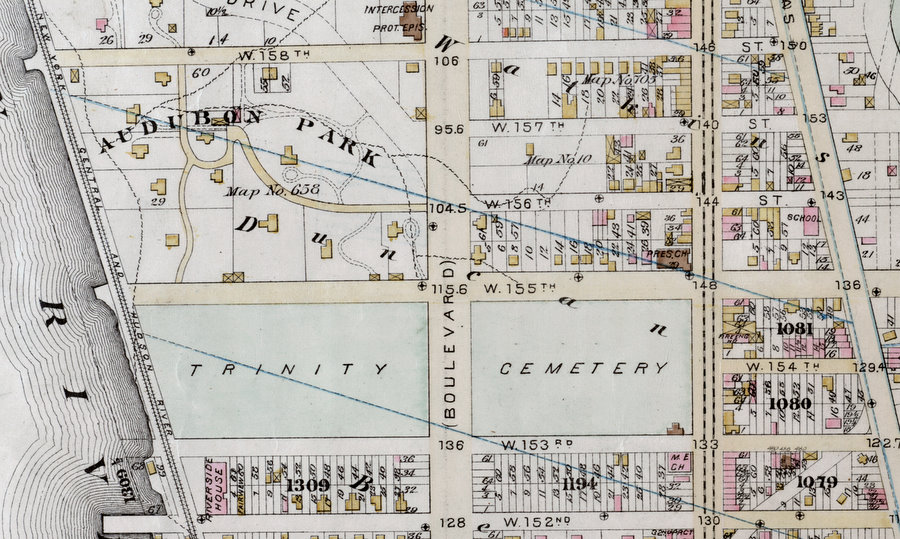Audubon Park Historic District

AP
Image Courtesy of: The Lionel Pincus and Princess Firyal Map Division, The New York Public Library, Astor, Lenox and Tilden Foundations
This detail from Robinson's Atlas of the City of New York, 1885 highlights the growing contrast between the highly structured grid that continued to develop south and east of Audubon Park and the curving drives within the sparsely occupied Park. Inside it's boundaries, the park has changed. The Charles (C. H.) Kerner house that stood on the southeast corner of Audubon Park is now gone. Kerner, who leased and managed the Clarendon Hotel, at Fourth Avenue and Eighteenth Street, for more than 30 years also owned a large plot on the eastern side of Broadway at 157th Street, facing Audubon Park. He sold it in 1902 and died, two years later in 1904, of Bright's Disease. His NYTimes obituary noted that he was "known as a breeder and owner of trotting horses." He immigrated to the United States at the age of 18 from Hamburg, Germany, and was "one of the oldest members of the New York Stock Exchange."
Two decades earlier, three churches clustered near 10th Avenue (Amsterdam) and 155th Street in Carmansville. Now, only the Washington Heights Presbyterian remains. The Episcopal Church has relocated to Audubon Park's north easter corner and the Methodist have south to 152nd Street. At the foot of 152nd Street a few yards from the 152nd railroad stop the Depot Hotel has spruced up to become the Riverside House, that Harper's magazine described as "a summer hotel" that is "filled in the leafy months with fashionable truants from the town."
In1878, Georgianna Audubon, Victor's widow, moved from Audubon Park to a house on 152nd Street that Richard Carman's grandson Richard Carman Sage owned and that his lawyer managed in his abscence, Sage living in England at the time. Georgianna's daughters, Mary Eliza, Rose, Lucy Bakewell (one of two granddaughters named for Lucy Audubon) and Annie formed The Audubon School ("Advantages of town and country. Boarding pupils limited to ten."), with "Miss Eliza" as principal.
Their cousin, Maria Rebecca, taught for awhile in New York and New Haven, then became assistant to M. Louise Comstock, founder of the Comstock School. When Miss Comstock died in 1889, she named Maria Rebecca executor and primary beneficiary of her will. Maria Rebecca's inheritance bequethed her the time and resources necessary to wreak havoc on her grandfather's journals, which she edited and published in 1897, to the eternal condemnation of Audubon scholars, not so much that she concocted her own narrative, but that she destroyed the originals when she was done.
Detail from Robinson Map 1885
